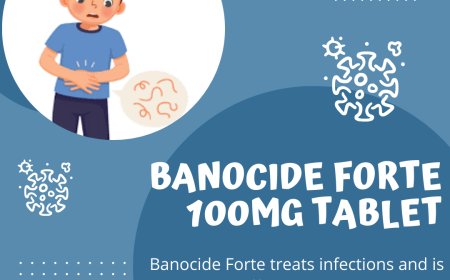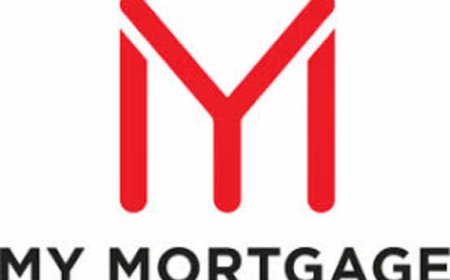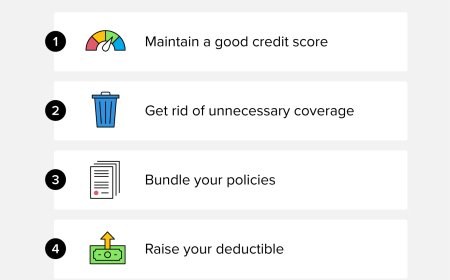How to Apply for Subsidized Housing Ontario RGI
How to Apply for Subsidized Housing Ontario RGI Access to affordable housing is a crucial component of social well-being in Ontario. The Rent-Geared-to-Income (RGI) program, also known as subsidized housing, provides low-income individuals and families with rental accommodations where rent is based on income rather than market rates. Understanding how to apply for subsidized housing in Ontario thr
How to Apply for Subsidized Housing Ontario RGI
Access to affordable housing is a crucial component of social well-being in Ontario. The Rent-Geared-to-Income (RGI) program, also known as subsidized housing, provides low-income individuals and families with rental accommodations where rent is based on income rather than market rates. Understanding how to apply for subsidized housing in Ontario through the RGI program is essential for those seeking affordable, stable housing solutions. This comprehensive tutorial offers a detailed, step-by-step guide on the application process, best practices, useful tools, real-world examples, and answers to frequently asked questions.
Step-by-Step Guide
Step 1: Understand Eligibility Criteria
Before applying, it is important to verify if you meet the eligibility requirements for subsidized housing in Ontario. Generally, eligibility depends on your household income, residency status, and housing need. Key points include:
- Income Limits: Your household income must fall below a certain threshold, which varies by region and household size.
- Residency: Applicants typically must be Canadian citizens, permanent residents, or have eligible immigration status.
- Housing Need: Priority is often given to those who are homeless, living in unsuitable conditions, or at risk of homelessness.
Step 2: Locate Your Local Housing Provider
Subsidized housing applications in Ontario are managed by local housing providers or municipal housing offices. Visit the official Ontario government website or your municipality’s housing department to identify the correct office or provider responsible for RGI housing in your area.
Step 3: Gather Required Documentation
Having the proper documents ready will streamline your application. Typical documents include:
- Proof of income (pay stubs, tax returns, social assistance statements)
- Photo identification (driver’s license, health card, passport)
- Proof of residency (utility bills, lease agreements)
- Immigration or citizenship documents if applicable
- Household composition details (birth certificates, custody agreements)
Step 4: Complete the Application Form
Applications can often be completed online, by mail, or in person depending on your housing provider. The form will request personal information, household income, current living situation, and preferences for housing type or location. Be thorough and accurate to avoid delays.
Step 5: Submit Your Application
Submit your completed application along with all required documentation to the appropriate housing provider. Keep copies of all documents and confirmation receipts for your records.
Step 6: Application Review and Verification
After submission, your application will be reviewed for eligibility. Housing providers may contact you for an interview or additional information. Verification of income and residency status will also occur during this stage.
Step 7: Wait for Placement or Offer
Due to high demand, wait times for subsidized housing can vary significantly. Your application will be placed on a waiting list and prioritized based on need and eligibility. When a unit becomes available, you will be contacted with an offer.
Step 8: Accept the Offer and Sign the Lease
If you receive an offer, review the terms carefully. Upon acceptance, you will sign a lease agreement, pay any required deposits, and move into your subsidized unit.
Best Practices
Maintain Updated Information
Keep your contact details and household information current with your housing provider. Changes in income, family size, or address should be reported promptly to ensure your application status reflects your needs.
Apply to Multiple Housing Providers
Since availability varies, consider applying to several local housing providers or municipalities to increase your chances of placement.
Be Honest and Accurate
Providing truthful and complete information is critical. Misrepresentation can lead to application denial or eviction if discovered after placement.
Prepare for Long Wait Times
Understand that demand for subsidized housing often exceeds supply. Use interim housing options if necessary and regularly check your application status.
Seek Assistance if Needed
If you have difficulty understanding the application process or filling out forms, local community organizations or housing advocates can provide guidance.
Tools and Resources
Ontario.ca Housing Portal
The official Ontario government website offers comprehensive information on subsidized housing, eligibility criteria, and application procedures. Visit ontario.ca to access resources and links to local housing providers.
Local Municipal Housing Offices
Most municipalities maintain dedicated housing offices or social services departments that manage RGI housing applications. Their websites often provide downloadable application forms and contact information.
Online Application Systems
Some regions use centralized online platforms such as the Centralized Waiting List or Housing Access portals that allow applicants to apply to multiple providers simultaneously.
Community Housing Organizations
Non-profit and community organizations involved in affordable housing may offer workshops, application assistance, and temporary housing support.
Income Verification Tools
Tools like CRA My Account (Canada Revenue Agency) can help applicants gather necessary tax documents needed for income verification.
Real Examples
Example 1: Applying in Toronto
John and his family, living on a fixed income, applied for RGI housing through the Toronto Community Housing Corporation (TCHC). They completed the online application, submitted their income verification documents, and registered on the centralized waiting list. After 18 months, they received an offer for a two-bedroom unit in a family-friendly neighborhood.
Example 2: Single Applicant in Ottawa
Maria, a single professional earning low income, applied through the Ottawa Community Housing (OCH) portal. She updated her application promptly when her income changed, ensuring she remained eligible. Though wait times were long, her persistence paid off when she was matched with a subsidized bachelor apartment.
Example 3: Priority Housing for Seniors
George, a senior citizen, applied for subsidized housing with priority status due to his age and health conditions. The local housing office expedited his application and placed him in an accessible unit within six months.
FAQs
What is Rent-Geared-to-Income (RGI) housing?
RGI housing is subsidized rental housing where tenants pay rent based on their household income, typically around 30% of gross income, making housing affordable for low-income households.
How long does the application process take?
Wait times vary widely depending on location, household size, and demand. It can range from several months to multiple years.
Can I apply if I currently own a home?
Generally, owning a home may affect your eligibility, but exceptions exist depending on your financial situation and housing need. It is best to check with your local housing provider.
Is there an application fee?
Most subsidized housing applications in Ontario do not require a fee, but confirm with your local housing office.
What happens if my income changes after I move in?
You must report income changes to your housing provider immediately, as rent is recalculated based on current income.
Can I choose my subsidized housing unit?
Applicants can indicate preferences, but offers depend on availability and priority status.
Conclusion
Applying for subsidized housing in Ontario through the Rent-Geared-to-Income program is a vital step toward securing affordable, stable living conditions for eligible low-income individuals and families. By understanding the eligibility requirements, preparing necessary documentation, and following a structured application process, applicants can improve their chances of success. Patience and persistence are key due to high demand and variable wait times. Utilizing available tools, resources, and best practices can further streamline the journey toward obtaining subsidized housing. This tutorial serves as a comprehensive resource to guide applicants through every phase of the RGI housing application process in Ontario.































